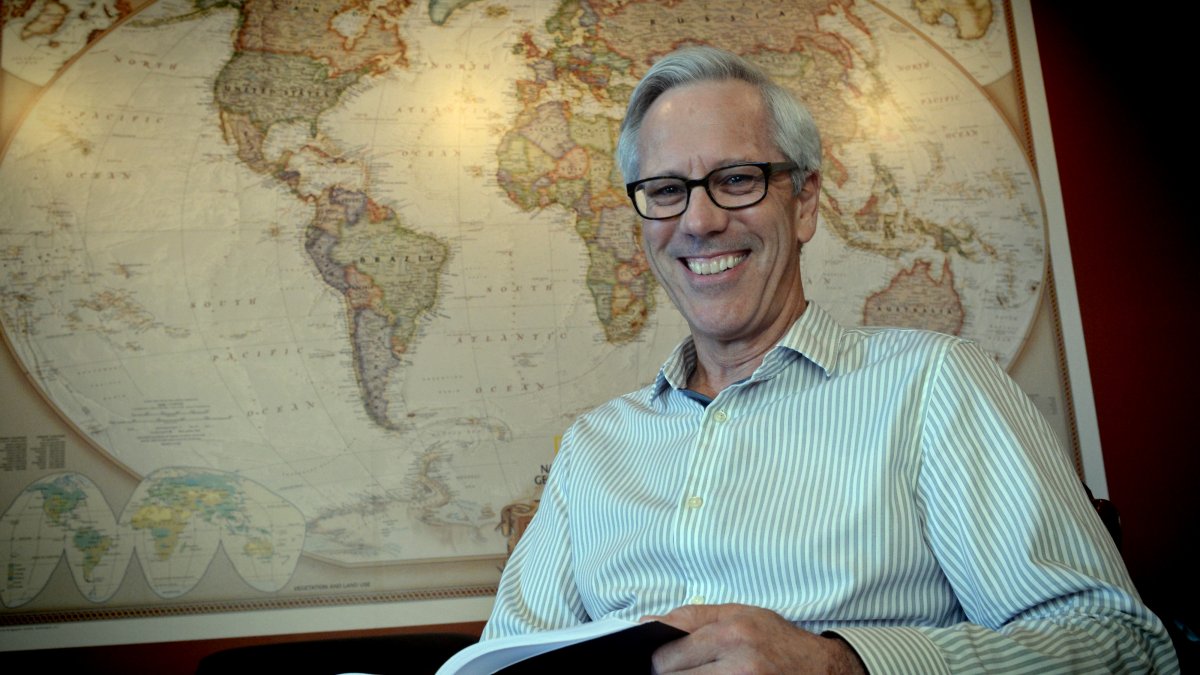Measuring the success of MEASURE Evaluation
MEASURE Evaluation is an organization that helps nations make the best healthcare decisions using "science that is changing the world."

To understand the remarkable global impact of MEASURE Evaluation, part of the Carolina Population Center, think back to 2003.
Back then, HIV/AIDS in America was no longer a death sentence but a manageable, long-term illness for those with access to antiretroviral drugs.
Yet in sub-Saharan Africa, where there were no such medications, more than 20 million people had died of HIV/AIDS, and the virus infected a third of the surviving population. Thousands were dying every day.
And so President George W. Bush created the U.S. President’s Emergency Plan for AIDS Relief (PEPFAR). The plan called for $15 billion for AIDS prevention, treatment and care over five years, concentrating on 15 hard-hit nations in Africa and the Caribbean. (The plan has been renewed every five years since then.) A few months after PEPFAR’s launch, the Clinton Foundation supported the cause by reaching an agreement with four pharmaceutical companies that cut the cost of HIV/AIDS drugs in these countries nearly in half.
PEPFAR is the largest initiative by any country to fight a disease globally, although most people have never heard of it. A half-billion in PEPFAR funding has allowed MEASURE Evaluation to play an indispensable role in the international fight against HIV/AIDS for the past 12 years.
A far-reaching collaboration
MEASURE Evaluation began in 1991 as The EVALUATION project, which received $17.4 million from the U.S. Agency for International Development (USAID) for family planning projects.
In 2003, USAID turned to the EVALUATION project to help with PEPFAR. Since then, USAID has given the organization now known as MEASURE Evaluation more than $500 million, including a five-year grant for $180 million announced a year ago.
The expansion from family planning to AIDS isn’t as odd as it seems. MEASURE Evaluation is not a team of doctors and nurses delivering care to the sick; it’s the organization that makes that treatment possible. Staffed by epidemiologists, data analysts, computer scientists, public health managers, policy wonks and others, MEASURE Evaluation gathers the information that nations need to make the best healthcare decisions.
MEASURE Evaluation staff members also mentor local healthcare system employees on how to collect and evaluate the information themselves, after MEASURE Evaluation has moved on. The goal is to strengthen health information systems in developing countries to make them capable of handling not just AIDS but any disease or healthcare challenge.
“The basic idea that underlies all our work is the belief that, by improving information, public health practitioners in the countries we serve will be equipped to make better decisions about the allocation of resources, which in turn will result in building better public health systems, which will lead ultimately to better health outcomes for people,” said Jim Thomas, director of MEASURE Evaluation and an associate professor of epidemiology. MEASURE Evaluation’s partners in this work are the Futures Group, ICF International, John Snow Inc., Management Sciences for Health and Tulane University.
An unfolding story
The importance of building stronger healthcare systems in developing countries became glaringly apparent with the 2014 outbreak of Ebola in West Africa, the deadliest occurrence of the disease since its discovery in 1976.
“Ebola came along, and it acted very differently from HIV/AIDS. It produces death on a scale that is very sudden, very dramatic. It caught the world’s attention, and it revealed that the health systems in the affected countries were not strong enough and fell apart very quickly,” Thomas said. “The talk after Ebola is the need to develop health care systems that can detect the next epidemic and respond to it very quickly.”
That’s the specialty of MEASURE Evaluation. Although much of its funding is for battling AIDS, MEASURE Evaluation also uses its special skill set – interviewing, mapping, analyzing data and connecting the dots – to improve health outcomes for other diseases and for vulnerable populations. The project helps generate evidence and develop systems that allocate resources to the most effective practices, such as:
- Supporting the distribution of insecticide-treated bed nets so that children in Africa can go to sleep without contracting malaria from a mosquito bite.
- Helping women in remote villages survive their pregnancies by improving their access to and use of health facilities and family planning.
- Encouraging concurrent treatment for tuberculosis and HIV to improve patient survival rates.
Instructing mothers to breastfeed their babies instead of giving them river water so contaminated that it could cause fatal cases of diarrhea in infants.
And, yes, it’s continuing the battle against AIDS, Thomas said.
World-changing science
That battle got a huge boost in 2011 thanks to preliminary results from a study led by internationally renowned AIDS researcher Myron Cohen, the University’s associate vice chancellor for global health and director of the Institute for Global Health and Infectious Diseases.
The Strategic Timing of Anti-Retroviral Treatment (START) study showed that early treatment reduced the risk of HIV transmission to an uninfected partner by at least 96 percent. The results of the study were so astounding that an oversight board decided that the magnitude of benefit made it unethical not to act on the results before the study was done.
The “treatment as prevention” benefit fundamentally changed attitudes toward the HIV epidemic. In 2014, the Joint United Nations Programme on HIV/AIDS (UNAIDS) set the “90-90-90” target: getting a diagnosis for 90 percent of the people infected with HIV; putting 90 percent of those on antiretroviral therapy; and getting 90 percent of those virally suppressed.
In July, at the International AIDS Society conference in Vancouver, Canada, Cohen presented the final results of his 10-year study, showing that START’s dramatic early findings continued through the study’s conclusion.
Yet major challenges remain throughout much of the world, Thousands of people with HIV have never been tested. Thousands more who have tested positive never begin treatment or discontinue it.
“The significance of the research findings is that AIDS medications, when used consistently, can break the chain of HIV transmission, with the potential to eradicate the virus when all infected people die natural deaths,” Cohen said.
“For the foreseeable future, however, such a medical strategy will disproportionately benefit industrialized countries whose residents have wider, though far from universal, access to modern health care.”
PEPFAR 3.0 includes strategies to overcome these challenges to reach the 90-90-90 goal. For MEASURE Evaluation, that means collecting more data to determine what works and keeping programs on track to achieve these goals. New PEPFAR initiatives aim to deliver on the promise of an AIDS-free generation with such new initiatives as DREAMS (Determined, Resilient, Empowered, AIDS-free, Mentored and Safe) directed toward the estimated 380,000 adolescent girls and young women who are still infected with HIV every year.
Being part of something that has had such a real and enduring impact on the world is more satisfying than, as a scientist, he can describe, Thomas said.
“One of the frustrations I get as a professor is that I will do a project and write it up and for a time it will get notoriety, but then, poof, it’s gone, and I’m on to the next thing,” Thomas said. “I never get the sense that I am getting enough real traction on anything to make much of a difference.”
MEASURE Evaluation changed all that for him. “This project, because of its size and longevity, is different,” he said. “The science that we are doing is not getting stuck on shelves. It is science that is changing the world. We see it happening and that is tremendously rewarding.”




